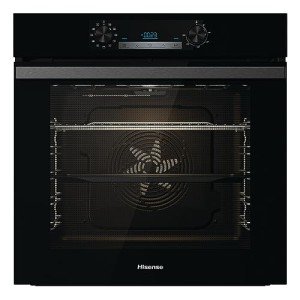The Ultimate Guide to Self-Cleaning Ovens
In today's fast-paced world, devices that streamline home chores are significantly searched for. One such appliance that has gained tremendous popularity is the self-cleaning oven. This ingenious kitchen area tool not only cooks meals efficiently but also takes the inconvenience out of cleaning. This short article looks into how self-cleaning ovens work, their benefits, maintenance tips, and answers to regularly asked concerns.
Comprehending Self-Cleaning Ovens
A self-cleaning oven is designed to remove the need for manual scrubbing. The self-cleaning function permits the oven to clean itself using high heat to burn food residues and spills, turning them into ash that can be quickly wiped away.
How Self-Cleaning Ovens Work
Self-cleaning ovens generally utilize one of 2 innovations: pyrolytic cleaning and steam cleaning.
Pyrolytic Cleaning:
- Heating aspects raise the internal temperature of the oven to around 900 ° F(482 ° C
- ). This extreme heat incinerates food particles and spills, decreasing them to ash.
- After the cleaning cycle, only the ash remains, which can be easily cleaned away with a damp fabric.
Steam Cleaning:
- A smaller sized, less extreme cleaning process involves including water to the oven.
- The oven then heats up to create steam that loosens grime and baked-on food.
- After the cycle, users require to clean the interior to remove the particles.
Benefits of Self-Cleaning Ovens
Self-cleaning ovens included many benefits that can improve the cooking experience.
| Benefit | Description |
|---|---|
| Time-Saving | Minimizes the time invested in oven cleaning, enabling for more time to prepare or unwind. |
| Energy Efficient | The majority of self-cleaning cycles utilize less energy than standard cleaning methods gradually. |
| Much better Hygiene | Heats eliminate germs and pathogens often discovered in food residues. |
| Convenience | No need for extreme chemicals or scrubbing, making it more secure and much easier to preserve. |
| Durability | Self-cleaning ovens typically have more durable interiors, protecting them against damage with time. |
Expense Considerations
While self-cleaning ovens are highly hassle-free, they do frequently come at a premium cost compared to standard ovens. Here's a short take a look at normal cost ranges:
| Oven Type | Cost Range |
|---|---|
| Standard Conventional | ₤ 300 - ₤ 700 |
| Self-Cleaning (Pyrolytic) | ₤ 700 - ₤ 1,200 |
| Self-Cleaning (Steam) | ₤ 500 - ₤ 900 |
Maintenance Tips for Self-Cleaning Ovens
While self-cleaning ovens require less maintenance than conventional ovens, some care is still needed to guarantee long-lasting performance:
- Regular Wipe-Downs: Even with a self-cleaning cycle, it is beneficial to wipe down the interior of the oven periodically to prevent extreme buildup.
- Use the Right Cookware: Avoid using pots and pans that might scratch or harm the interior of the oven during cleaning cycles.
- Follow Manufacturer's Instructions: Always refer to the user handbook for specific cleaning standards and recommended cleaning frequencies.
- Ventilation: Ensure correct ventilation throughout the self-cleaning cycle as the heats can launch smells or smoke.
- Examine Gaskets and Seals: Regularly check the door gaskets and seals for wear and tear to keep oven efficiency and safety.
Frequently Asked Questions (FAQs)
1. How often should I use the self-cleaning function?
It is usually recommended to use the self-cleaning feature every few months, depending on usage. Greatly utilized ovens may require more regular cleanings.
2. Can I disrupt a self-cleaning cycle?
It is not recommended to interrupt a self-cleaning cycle as it might trigger damage. If interrupted, enable the oven to cool down before resuming the cycle.
3. Are self-cleaning ovens safe for family pets and children?
While the self-cleaning process is safe, it is best to keep pets and children far from the kitchen during the cleaning cycle due to high temperatures and potential smoke.
4. The length of time does the self-cleaning cycle take?
The period of the self-cleaning cycle can differ, however it generally lasts in between 2 to 4 hours, depending on the oven design and the level of cleaning required.
5. Can I use oven cleaners throughout the self-cleaning process?
No, it is not advised to use business oven cleaners throughout the self-cleaning process as they may produce hazardous fumes and damage the oven's interior.
Self-cleaning ovens represent a substantial improvement in cooking area technology, offering a hassle-free response to among household tasks' most laborious jobs. With their safety features, energy efficiency, and ease of use, they are an important addition to any home.
Understanding how to efficiently run and preserve a self-cleaning oven can ensure a long lifespan and ideal cooking performance. As just click the up coming internet site continues to progress, the kitchen will unquestionably see much more innovations targeted at providing convenience and efficiency in meal preparation.

